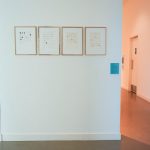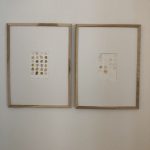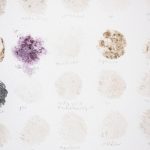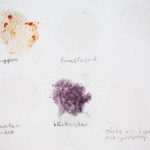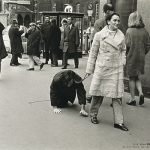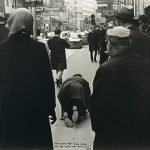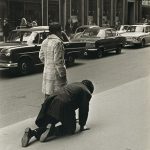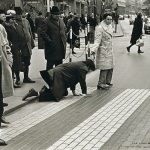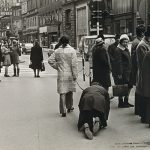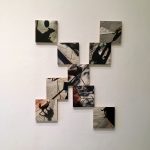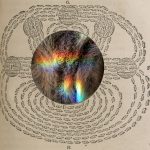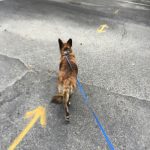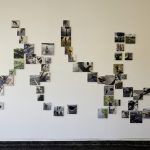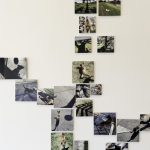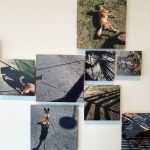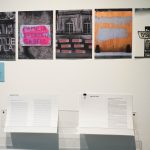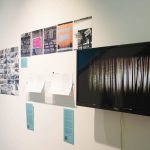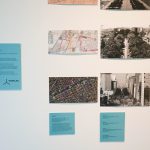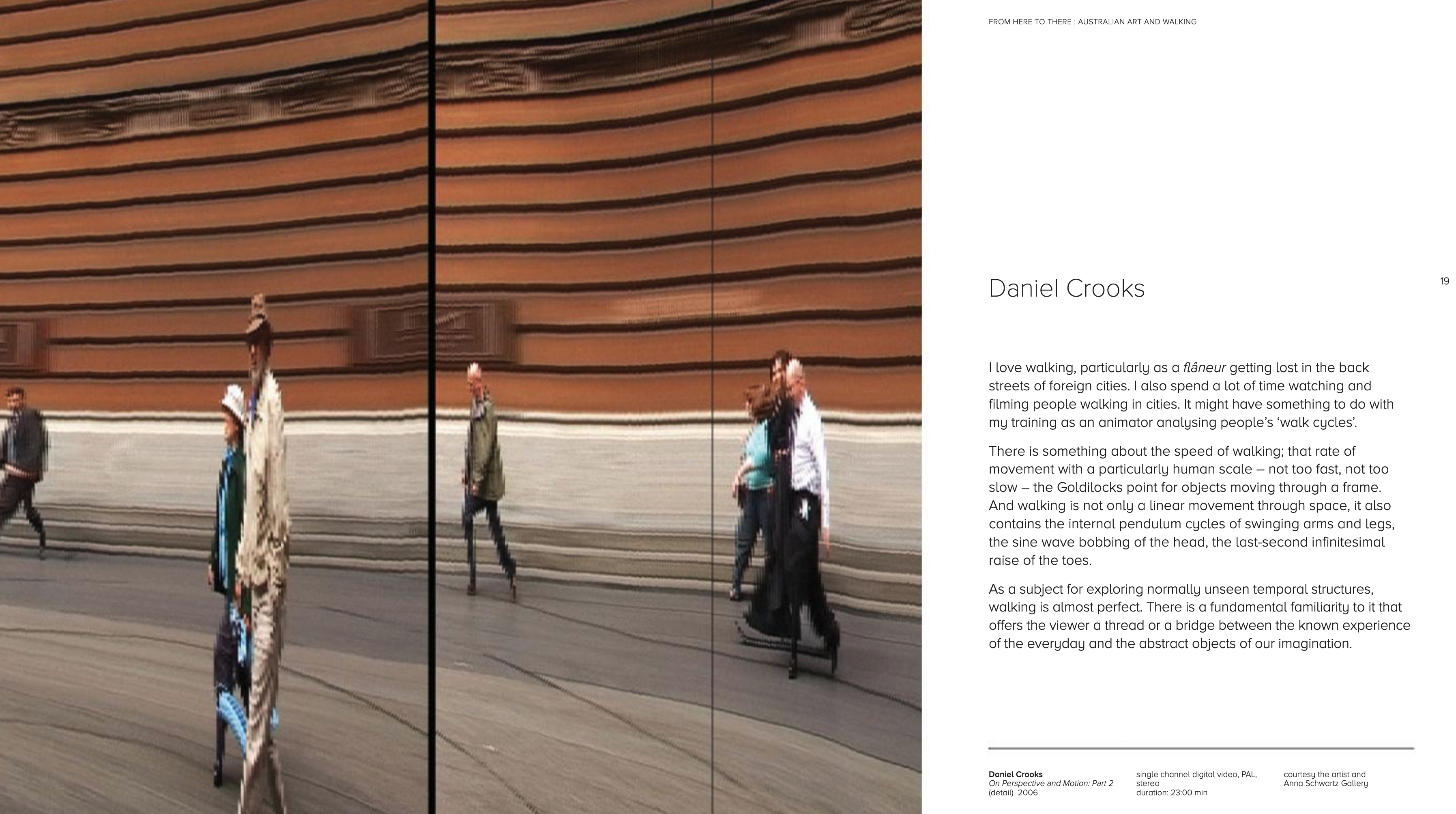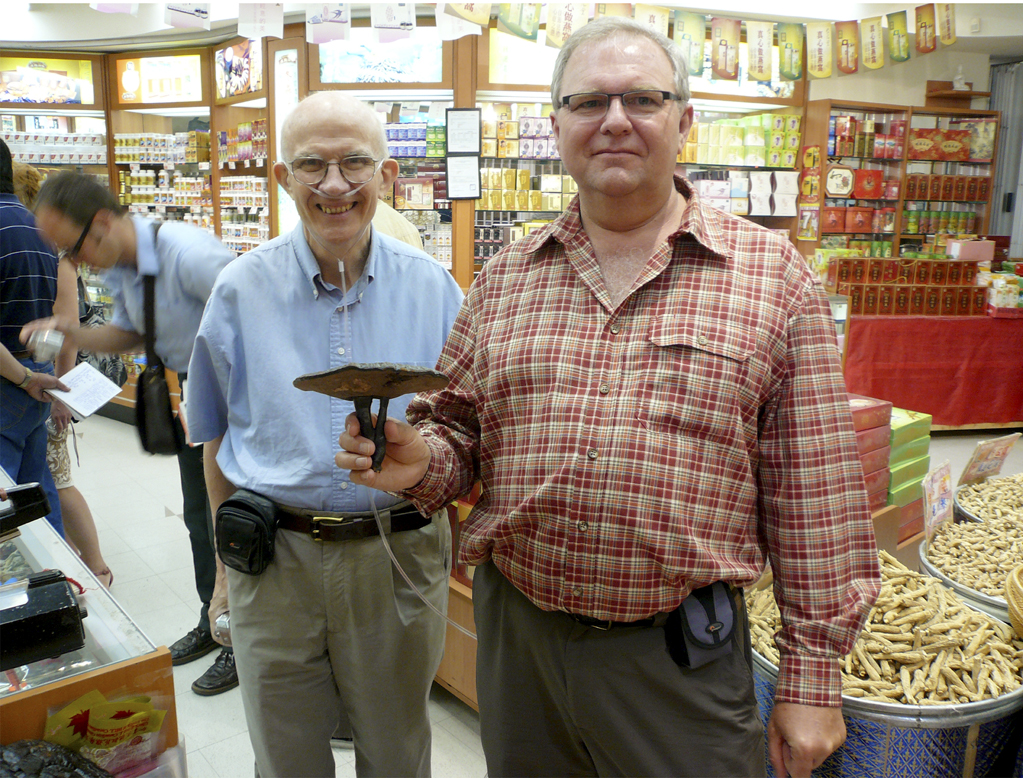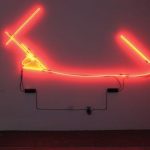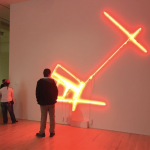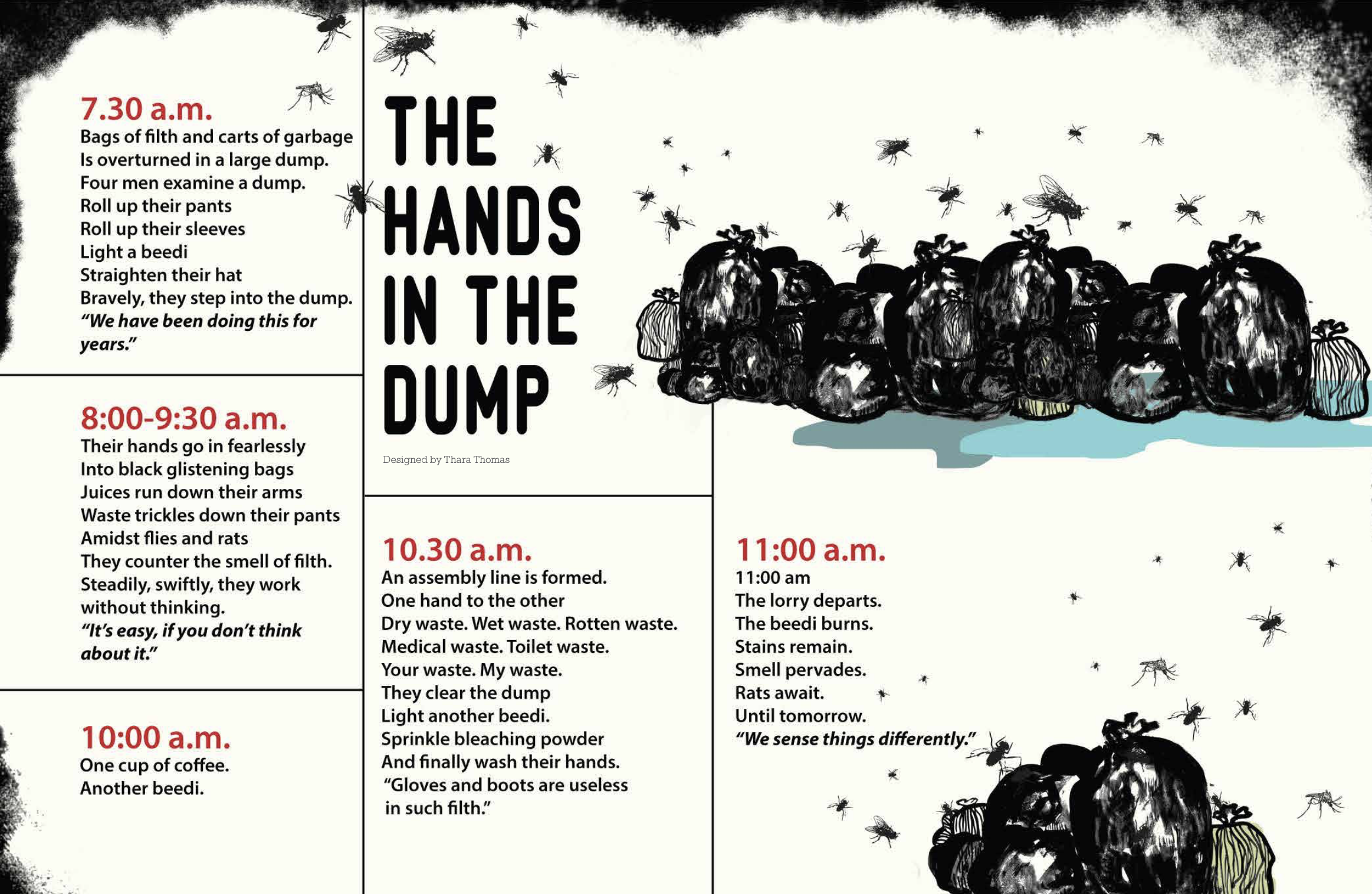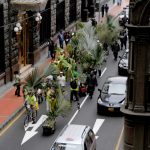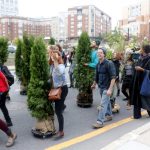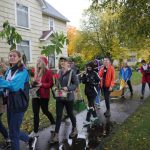Olle Helin [Malmö, Sweden] “Colour charts” (2020-2022) found pigments on aquarelle paper
“The Colour charts is an ongoing series of paintings, and a product of a fairly simple work method: I go out on the streets with a watercolor pad, a paint brush and some water. The paper is small enough to be held with one hand, in sizes ranging from A6 to A4. I collect pigments that I find on these “color walks” – gravel on roads, dirt from window panes, dust and bird droppings, etc. – with the brush, and apply them in order on the sheet of paper. The dirt leads me to overlooked places in the city where dirt collects, to gaps and on routes I could not have foreseen. The walks, like a derive, become an experimental way to explore the city. In the work’s title, the word “chart” is used in the double meaning of the word: both as a systematic arrangement of color, and in the geographical sense as a schematic representation of an area or a route.”
Text from wall didactic in Walk With Us exhibition at Rochester Art Center.
